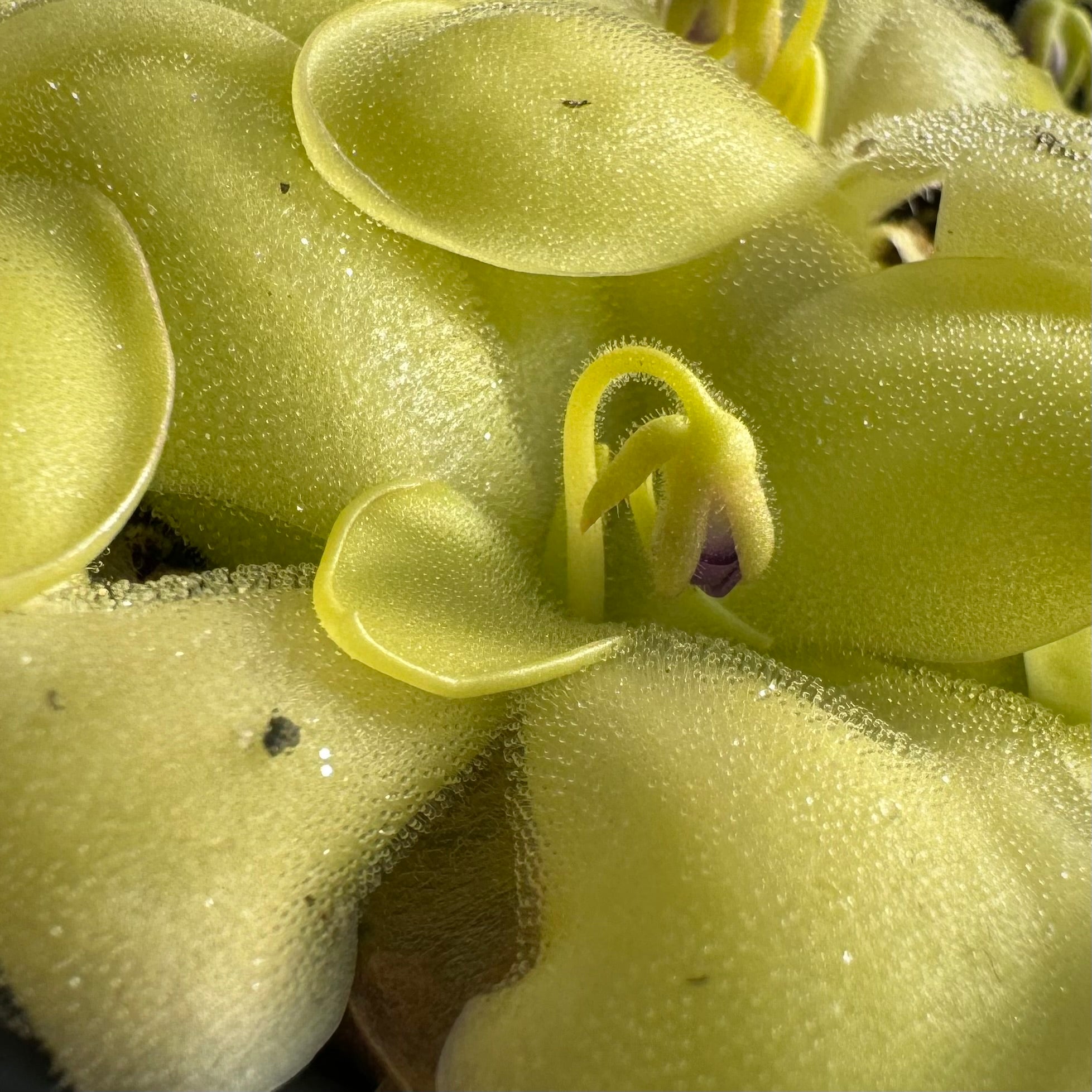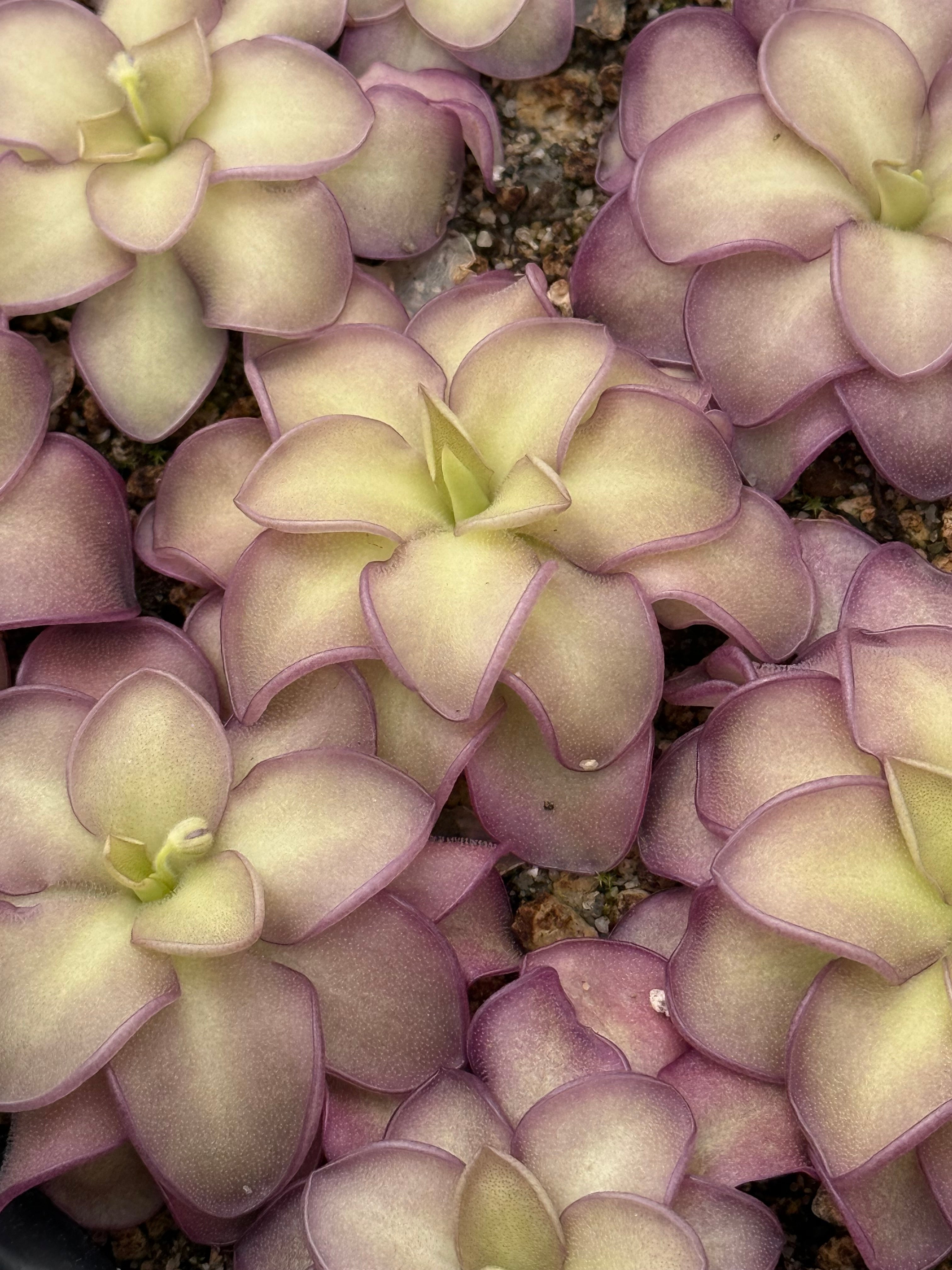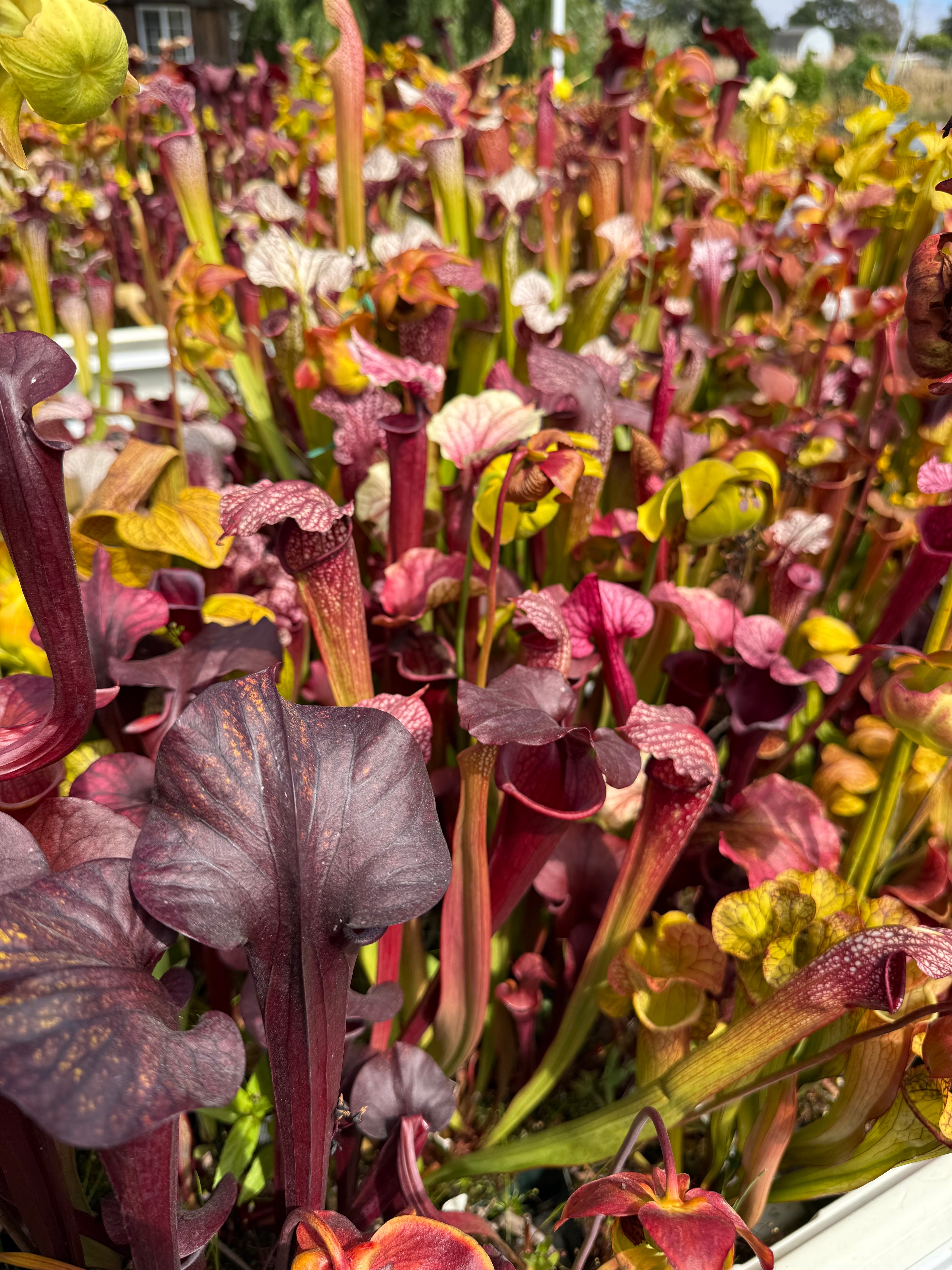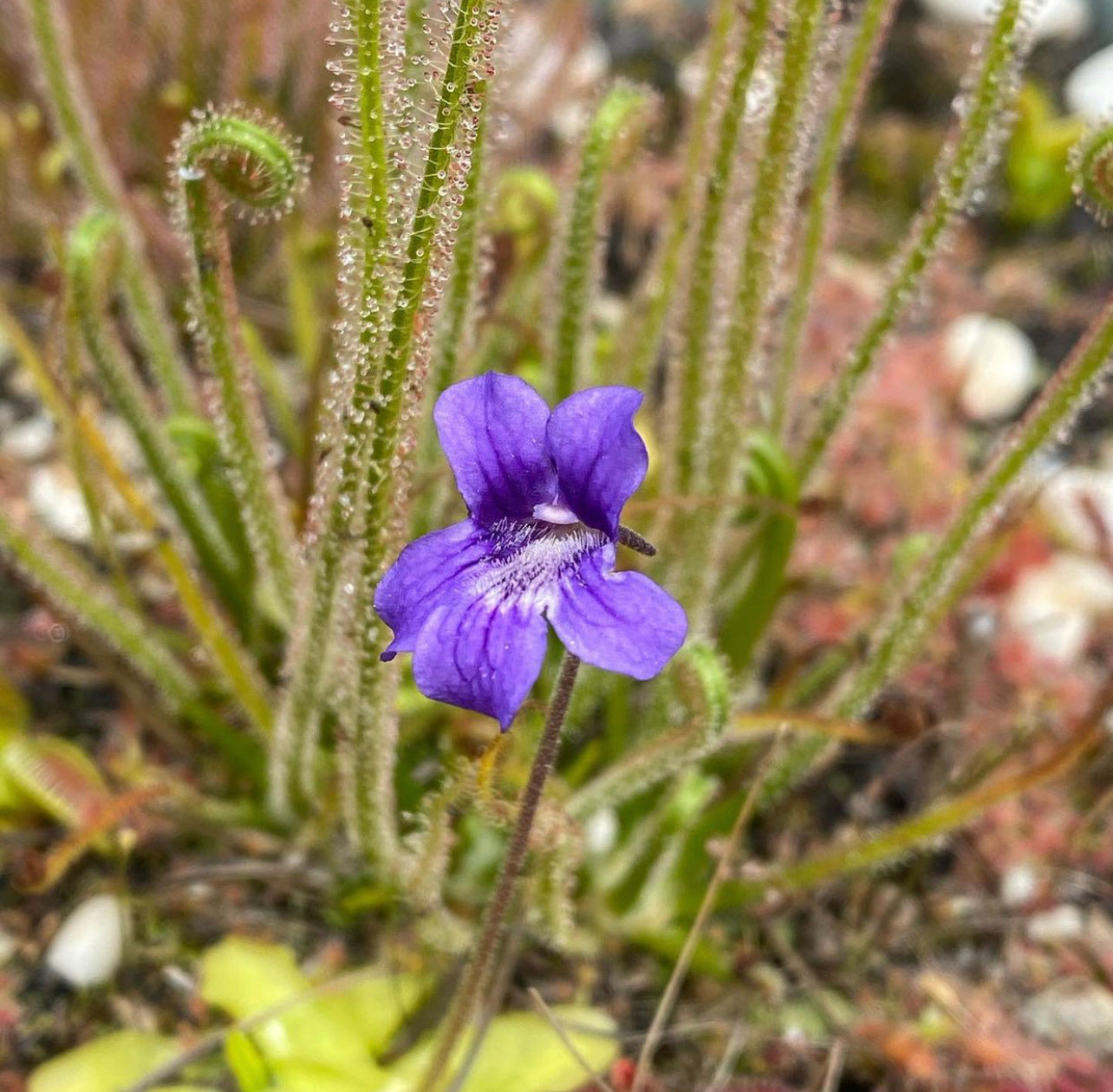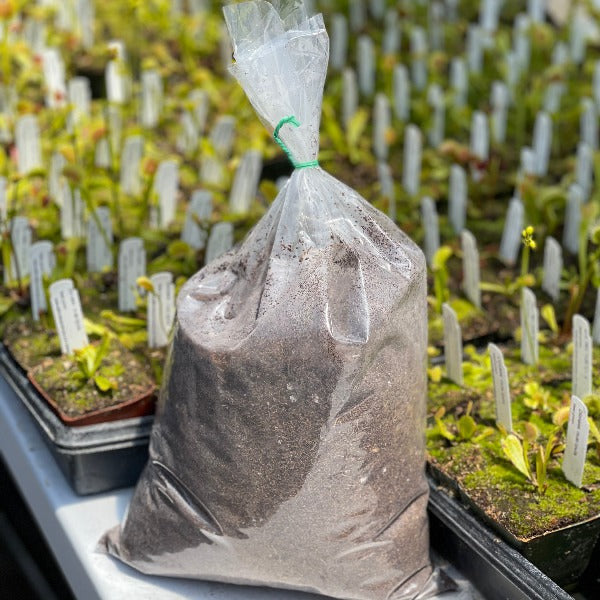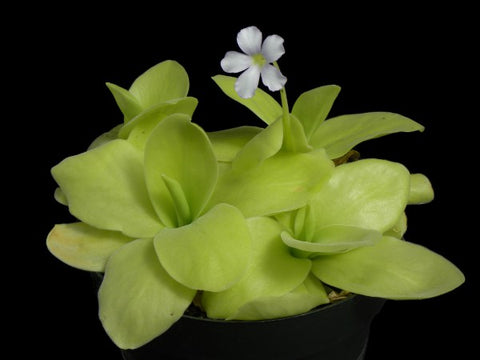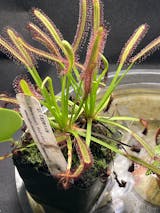Butterworts (Pinguicula) Growing Tips
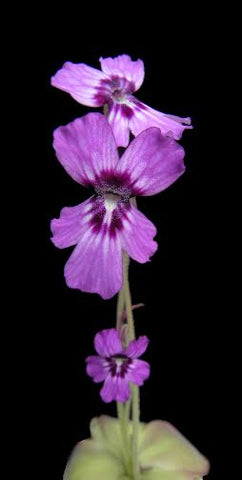 Sun: Partly sunny growing conditions. Great for sunny windowsills. When grown under high intensity fluorescent grow lights many of them will blush so that the entire plant is glowing pink or red!
Sun: Partly sunny growing conditions. Great for sunny windowsills. When grown under high intensity fluorescent grow lights many of them will blush so that the entire plant is glowing pink or red!
Water: All temperate and warm temperate species should be grown permanently wet on the tray system, with frequent overhead watering. Use chilly water for your temperate pings. The Mexican varieties can be kept on the tray system with overhead watering while they have carnivorous foliage in summer and autumn. When the rosettes change to their small succulents in winter, keep the soil on the dry side, dampening them only slightly and occasionally. You can usually tell how dry a species enjoys its winter by the size of its succulent leaves. The tighter, smaller leafed rosettes such a Pinguicula gypsicola or the bulb-like heterophylla and macrophylla require bone-dry conditions. Species with larger winter leaves, like a few of the moranensis varieties or agnata, enjoy winters soils just slightly damp. Cuban species should be kept wet year-round, with only slight winter drying.
Temperature: As butterworts grow worldwide, they come from varied climates. Temperate Pinguicula need cold winters while they are dormant to thrive. The warm temperate species from the U.S. tolerate light frost and brief freezes. They do best outdoors in areas with mild winters. Mexican Butterworts do well in terrariums, greenhouses and windowsills
Dormancy: Mexican or Tropical butterworts have a winter dormancy that is marked by a change in the leaves from their carnivorous type to a tighter, more succulent leaf. When the Pinguicula has formed these tight, succulent leaves you can withhold water as described above for the dormancy period. We wait for the butterworts to go dormant before we stop watering. And when they begin growing their carnivorous leaves we begin the tray method of watering again.
Soil: Temperate species: Use a mix of two parts peat, one part sand, and one part perlite. Warm temperate varieties do well in a soil of one part peat to one part sand. Mexican and tropical species enjoy a more open mix of equal parts sand, perlite, vermiculite, and peat. Some growers add dolomite or gypsum to this, although we have not found it necessary. But when it's handy, add an additional part of lava rock or pumice. They may also be grown in a Nepenthes mix.
Fertilizer/Feeding: Temperate species grown outdoors will catch their own food. We use Schultz cactus fertilizer on our Mexican and Tropical Pinguicula, applying to the leaves only and following the instructions on the packaging for dilution.
Containers: Plastic or glazed ceramics with drainage holes suit most varieties. Warm temperate species can also do well in undrained containers, but you should let the water level fluctuate without drying out the soil. Mexican species do best in well-drained containers, but they can also be grown in shallow, undrained ceramics with very careful watering. Abalone shells (they enjoy the calcium) and chunks of lava rock that have large nooks and crannies make very interesting planters as well.
Share


